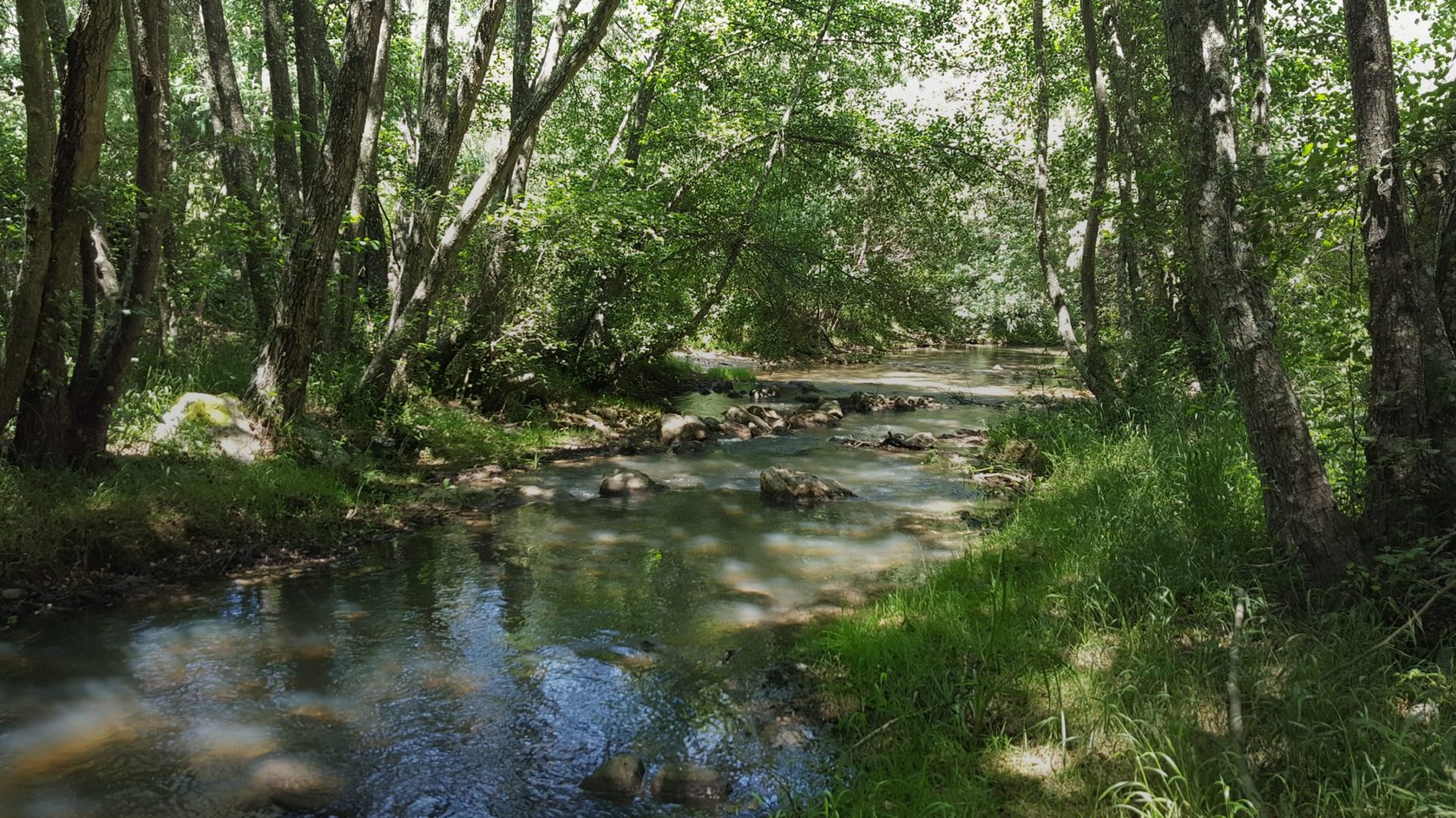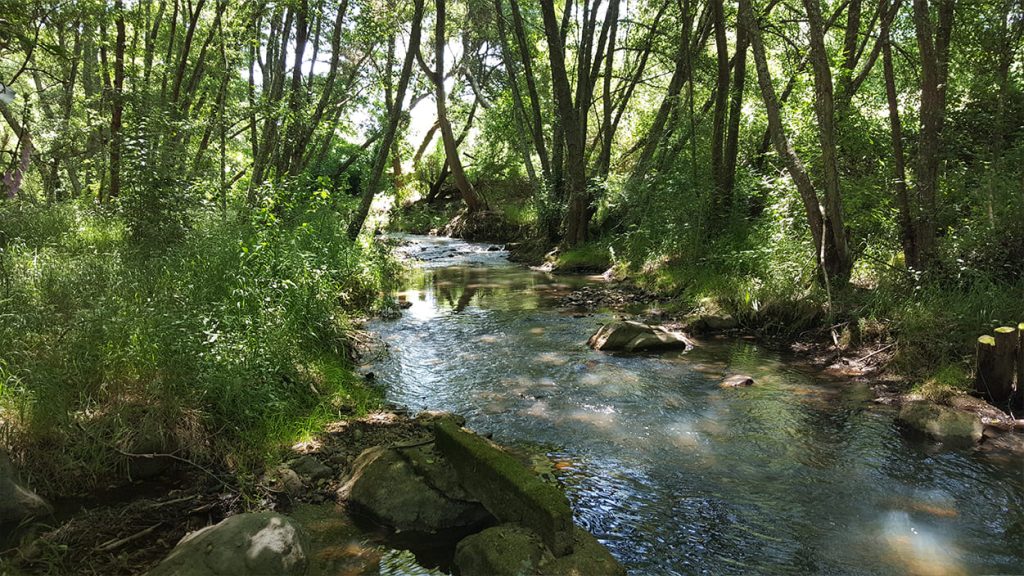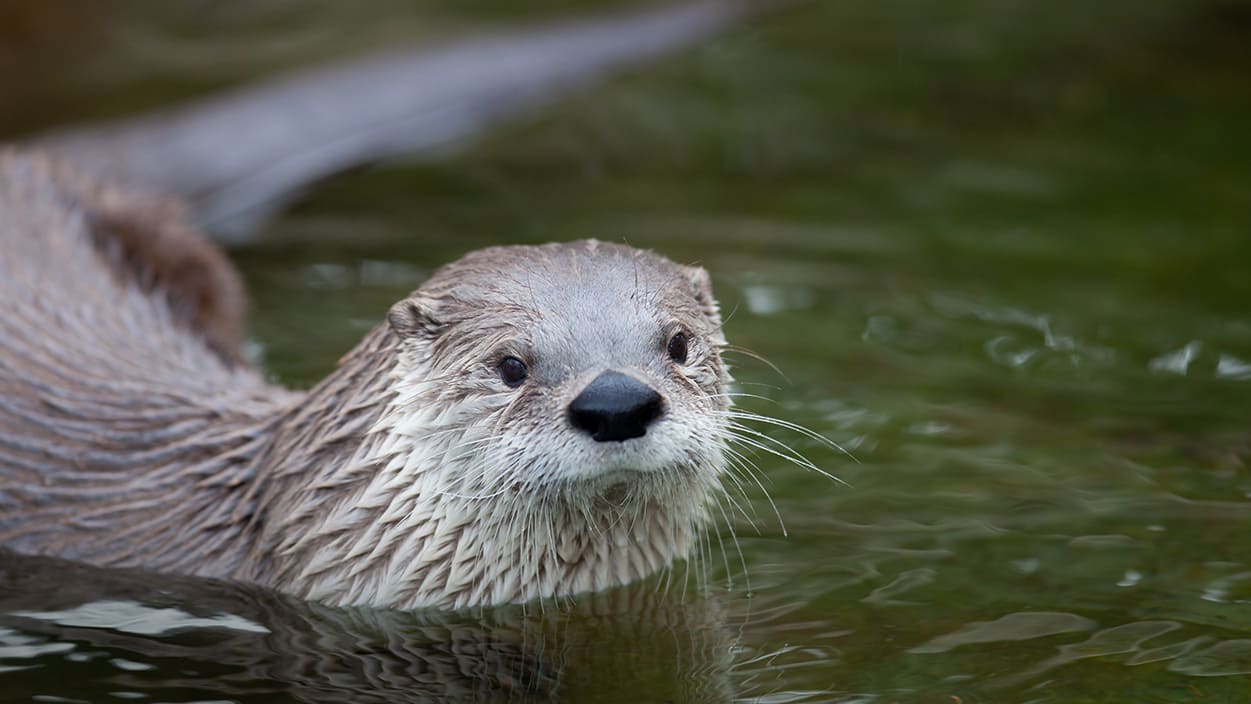Riparian forest is a characteristic habitat of the banks of permanent rivers and constitutes a transition zone between aquatic and terrestrial ecosystems. Dense, cool, and shaded, it is home to countless forms of life and this is just the most visible part of its high ecological value.
The forests that line the banks of rivers are recognised as important for the natural balance of ecosystems, both aquatic and terrestrial, since they provide shelter, protection, food, and optimal conditions for countless species to reproduce.
Riparian forest is a habitat typical of these transition areas between water and soil, also known as riparian or riverine galleries. Common throughout Europe and extending to south-east as far as the Aegean Sea, this habitat can be found in most Portuguese river basins, with the exception of the Guadiana, although several human activities – including water extraction – have reduced some galleries to thin tree lines.
The alder (Alnus glutinosa) is key to the identity of the riparian forest, but these shelters of life on the riverside bring together a very rich flora, including species such as the narrow-leaved ash (Fraxinus angustifolia), the laurel (Laurus nobilis), the alder buckthorn (Frangula alnus), the common hawthorn (Crataegus monogyna), the elderberry (Sambucus nigra), the white willow (Salix salviifolia) and the grey willow (Salix atrocinerea).
In addition to these trees and shrubs, the soil is typically covered with very diverse ground plants, especially ferns, including western black spleenwort (Asplenium onopteris) to lady fern (Athyrium filix-femina), royal fern (Osmunda regalis), soft shield fern (Polystichum setiferum) and white bryony (Bryonia dioica). All this flora contributes to a dense, diverse, humid environment with ample shade, making conditions favourable for the survival and reproduction of different animal populations.
Amphibians particularly benefit from this diversity, as their life cycles alternate between aquatic and terrestrial environments. Examples to be found in this habitat include the common toad (Bufo bufo) or the gold-striped salamander (Chioglossa lusitanica). Although less dependent on the aquatic environment, reptiles such as the pond tortoise (Emys orbicularis) and the Iberian emerald lizard (Lacerta schreiberi) also live there. Among the mammals that feed in riparian forests and make use of the seclusion there to breed are the European otter (Lutra lutra) and the Iberian desman (Galemys pyrenaicus). Birds such as the kingfisher (Alcedo atthis), the sand martin (Riparia riparia) or the bee-eater (Merops apiaster) also find optimal conditions in this habitat to nest or seek shelter during migrations.
Essential to the survival of various species, the riparian forest habitat works as an ecological corridor, which favours the natural dispersion of species and genetic exchange between populations. But its ecological value is reflected in several other ecosystem services, which has contributed to the classification of the alluvial forests of Alnus glutinosa and Fraxinus excelsior (code 91E0) as one of the 17 habitats with priority interest for conservation by the Natura 2000 Network – the network of areas designated for the conservation of wild, rare, threatened or vulnerable habitats and species in the European Union. Riparian forests are one of the subtypes of these habitats (91E0pt1).





